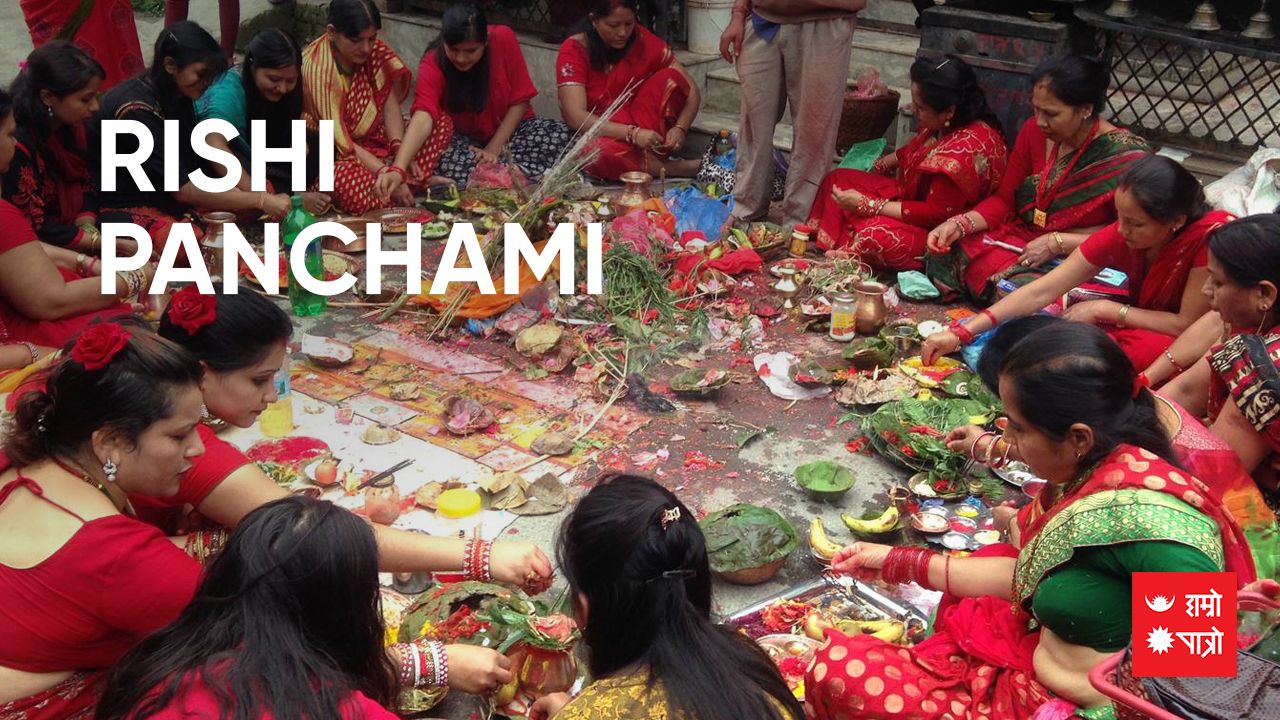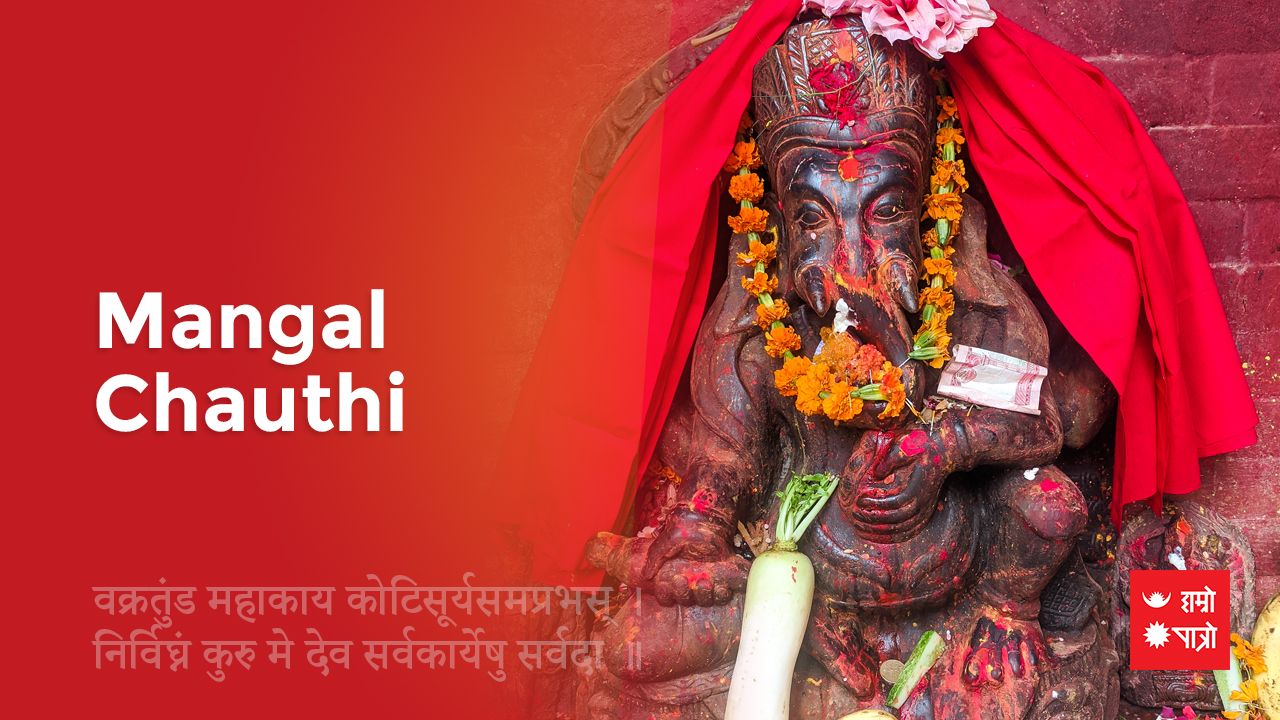
History of Rishi Panchami
Today (Bhadra Shukla Panchami) is Rishi Panchami, a special day for women to worship the seven sages (Saptarishis). The history of Rishi Panchami is thousands of years old and just as old is the history of the importance given to women's sexual and reproductive health and rights by Vedic Sanatan rituals. It is customary for women to compare the days of menstruation according to the four goddesses: Chandalani on the first day, Brahmadhatini on the second day, Dhobini on the third day and purification by bathing on the fourth day.
या देवी सर्वभूतेषु शक्तिरूपेण संस्थिता।
नमस्तस्यै नमस्तस्यै नमस्तस्यै नमो नमः॥
या देवी सर्वभूतेषु ज्ञानरूपेण संस्थिता।
नमस्तस्यै नमस्तस्यै नमस्तस्यै नमो नमः॥
या देवी सर्वभूतेषु दयारूपेण संस्थिता ।
नमस्तस्यै नमस्तस्यै नमस्तस्यै नमो नमः॥
Meaning:
The Goddess who is addressed as the consciousness among all beings, greet them, greet them, greet them repeatedly, frequently. Those Goddesses who are intellectually situated among all beings, greet them, greet them, greet them repeatedly. Those Goddesses who are mercifully situated in all beings, greet them, greet them, greet them repeatedly.
Our heartfelt salutations to the omnipresent and all-pervading woman in the universe as a force. It is clear that comparing menstruation with untouchability is a misinterpretation of the classical statement. In ancient times, it was forbidden to do kitchen and other activities to get enough rest during menstruation. Later, this prohibition was taken as untouchability and guilt. Remember that the menstrual blood of women is the basis of the universe, the essence of creation comes from here.
What is done today?
Today, women use UpaMarga, i.e. a plant with special natural herbal properties, to brush and chew their teeth after completing their daily routine in the morning. The Upamarga is a plant readily available on Nepali soil. Upamarga means the disease eradicating substance in Sanskrit. After using the stalk pieces of 108Upamarga, the women use the soil on their body and go to the nearby stream or lake to bathe. After bathing, it is customary to mix Panchabhagya i.e. milk, curd, ghee, dubo, kush and cow dung, and consume one or two drops of it kept in a copper vessel.
It is believed that the consumption of Panchabhagya will cure tuberculosis and skin diseases. After bathing in the morning and purifying the body and soul, the women worship and invoke sages like Kashyap, Aarti, Bhargadoj, Vishwamitra, Gautam, Jamadagni and Vashishta by installing diyas, kalash and Ganesh and offering various hymns and prayers. After that, the ritual of Rishi Panchami is completed only after the Brahmin performs the ritual worship.
There is a special crowd in various sage ashrams across the country, including the Risheshwar temple in Kathmandu Teku. On this day, it is customary for women to offer Sindoor/ Potey as a sign of their good fortune. Best wishes to Rishi Panchami, one of the scientific festivals of Vedic Sanatan Hindu rites. Let us not have to listen to the unpleasant news that the girl has suffered and died due to untouchability and chaupadi, let this ancient foundation show the importance of menstruation.
Mangal Chauthi

In Hindu rites, people worship and remember Lord Ganesha before starting any work so that there is no hindrance. It is customary to worship Lord Ganesha as a benevolent deity.
विघ्नेश्वराय वरदाय सुरप्रियाय, लम्बोदराय सकलाय जगद्विताय
नागाननाय श्रुतियज्ञविभुषिताय, गौरीसुताय गणनाथ नमो नमस्ते
Meaning:
Salutations to Vighnesvara (who eliminates my afflictions and hurdles), the giver of boons, beloved of the gods, tall, full of arts, benefactor of the world, with the mouth of an elephant, and beautified by the Vedas, the son of Parvati. O Gananath, greetings to you.
Relation of Tuesday, Chaturthi and Lord Ganesha
Today, Tuesday is also considered as the day of Lord Ganesha.
Since the birth date of Lord Ganesha falls on Chaturthi, it is customary to celebrate this day as Mangal Chauthi with special worship. Those who fast for Lord Ganesha on Tuesday start fasting from today.
Lord Ganesha is known as the deity who bestows auspicious fruits. If you are up to commencing any new work, then today is considered very auspicious. May all be well on this auspicious day.
Worship Methodology of Mangal Chauthi
Greetings to Vighneshwar, the giver of gifts, beloved of the gods, lambodar, full of arts, benefactor of the world, elephant-like face and adorned with Vedas and sacrifices, O Gananath, greetings to you.
Those who worship, recite, fast, narrate and adore Ganesha on this day with Riddhi Siddhi will get wealth, son, spouse, the good fortune of Mars and peace of mind and will get rid of all kinds of sorrows (suffering and disruption, etc.)
Worship materials should be prepared including paddy, rice, barley, sesame, kush, duna, tapari, panchamrit, avir, saffron, vermilion, red akshata, coconut, fruit, dish, incense, lamp, camphor, red flower, garland and preparing laddu, dubo etc can also be done. Turn east, north or west, sit in pure asana, lighting and invoking the lamp is done after.
Then with barley, sesame, water, flower, kush or dubo and drabya in the right hand, the Sankalpa i.e. place and time should be pronounced, the name of one's family and relatives should be pronounced with one's gotra, and the sankalpa should be taken with a sense of sakam or nishkam. Indeed, there is no rocket science to worship lord Ganesha, a pure heart and an unquestionable devotion are the key integrals, remember with compassion, Lord Ganesha will never disappoint you.
In this way, Ganesha will be pleased with the worship done with reverence and devotion and will surely fulfill the desires of the devotees. Astu
Suyog Dhakal
Liked by: